
views
Passing and Setting the Ball
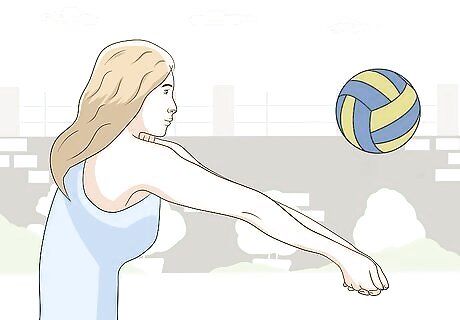
Bump the volleyball to yourself. In volleyball, a bump or forearm pass is when you pass the ball to another player. In this case, pass the ball to yourself. Toss the ball up slightly. Then as it comes down, get into your passing position, and bounce the ball off your forearms so it goes back up. Then get back into position and pass it back up. Think of this activity like juggling. Keep the ball up as long as you can by passing it to yourself. This drill will improve your passing form, strength, and reaction time.

Set the ball to yourself. A set, sometimes called an overhead pass, sends the ball straight up in the air for another player to spike. Rather than hitting the ball with your forearms, place both hands above your head and hit the ball straight up with your fingers. Toss the ball up lightly and set the ball when it comes down. Do the same exercise and keep the ball up for as long as you can with sets. Start by hitting the ball straight up. Then pass it more off to the side so you have to run to pass it again. This is a physical workout as well as a passing drill.

Alternate between passing and setting to yourself. Once you’ve gotten good at both types of passes, combine them for an advanced practice routine. Toss the ball up and pick a passing type to start with. Then switch between each pass type, keeping the ball up for as long as possible. Start by alternating the passing type each time the ball comes down. Then start switching at random times. For example, do 3 forearm passes, then 1 overhead pass. This keeps your body guessing and improves your reaction time. Gradually pass the ball further distances. Practice covering long distances quickly to improve your performance in the game.
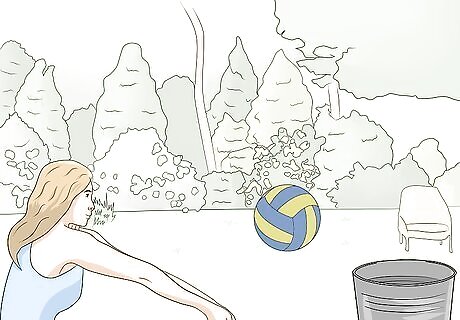
Pass the ball at different objects to improve your accuracy. After you’ve gotten good at passing to yourself, work on your accuracy. Pick a specific object or point. Then toss the ball up and pass it towards that point. Get as close as possible to improve your accuracy. Use both passing types for this exercise to improve your overall accuracy. Get creative with the targets you choose. Try drawing multiple chalk spots on the ground and a brick wall. Try to hit each point one right after the other. For very precise passing, try getting the ball into a garbage can or similar container.
Working Against a Wall
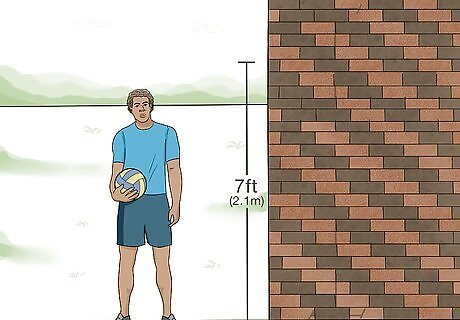
Make a mark at least 7 feet (2.1 m) high on a brick wall with no windows. For practice serving and spiking, find a flat wall with no windows so you won’t break anything. Regulation height for volleyball nets ranges from 7 feet (2.1 m) for youth leagues to 7 ft. 11 5/8 inches (2.43 meters) for adult men. If you know the exact height of the net you use, draw a chalk line at that height. Otherwise, make the line at least 7 feet (2.1 m) high to practice hitting over the net. The wall on a handball court works well for this exercise if you live near a park with a handball court. Stand 10–15 feet (3.0–4.6 m) away from the wall whenever you’re about to serve, pass, or spike against the wall.

Serve the volleyball against the wall. Stand 10–15 feet (3.0–4.6 m) away from the wall and get into your serve position. Then toss the ball up and serve it towards the wall. Aim to get it over the line that you drew so you know that your serve would’ve gone over the net. Work on your serving aim by picking a specific spot on the wall to aim for. Draw a circle on that spot if you need help visualizing it. There are multiple serve types, like over and underhanded. Practice them all against the wall.
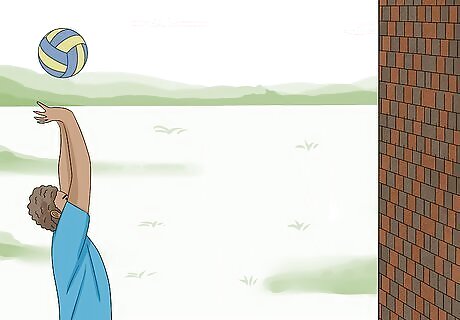
Volley against the wall. After you’ve gotten used to serving against the wall, start hitting the ball back. Serve and chase the ball down before it lands, just like if you were playing a game. Hit the ball back at the wall as if you were hitting it over a net. Keep this volley going as long as you can. Focus on getting the ball over the line you drew, but don’t stop if some of your hits are too low. Just try to keep the ball up as long as possible. This trains your reaction time and physical conditioning.
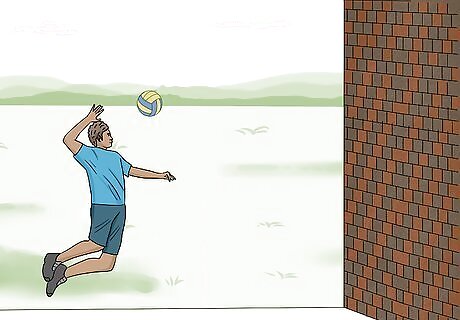
Spike the ball against the wall. While spiking usually requires a setup from a teammate, you can still go through the motions and spike the ball towards the wall. Toss the ball up in front of you. Then go through your spiking setup. When the ball falls down to you, spike it against the wall. Try to get your spikes over the line you drew so they will clear the net in a real game. Work on your accuracy by aiming at different points along the wall. Spike the ball as close to them as you can.
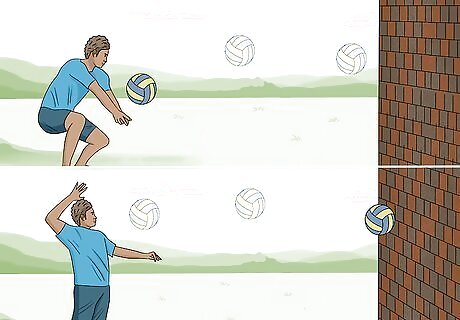
Do a solo pepper drill. In volleyball, peppering is a drill where 2 players pass the ball to each other. With the wall, you can do the routine by yourself. Start by serving the ball against the wall. When it bounces back to you, bump it to another location. Then get under the ball and set it. Finally, hit the ball against the wall. After serving, repeat this drill as many times as you can without the ball hitting the ground: bump, set, hit. If you have trouble doing this all at once, start smaller. Serve the ball and then catch it when it bounces back. Then bounce it up and catch it. Work your way up to doing the whole drill.
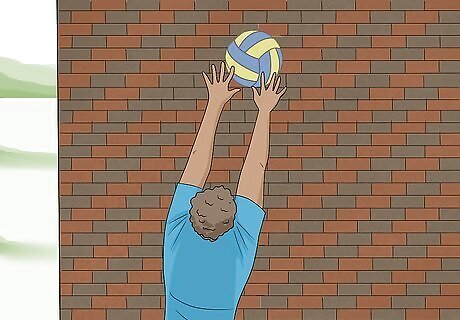
Practice blocking against the wall. Besides hitting the ball, blocking is another fundamental volleyball skill. Stand 1 foot (0.30 m) away from the wall with your hands extended up. Then bend your knees and do a vertical jump as high as you can. When you reach your highest point, push your hands forward as if you were blocking a volleyball. Get your hands at least as high as the line you drew so you can block a ball going over a real net. Challenge yourself by trying to reach higher areas of the wall. Set a point and do a vertical leap. Reach your hands up to try and reach it.


















Comments
0 comment